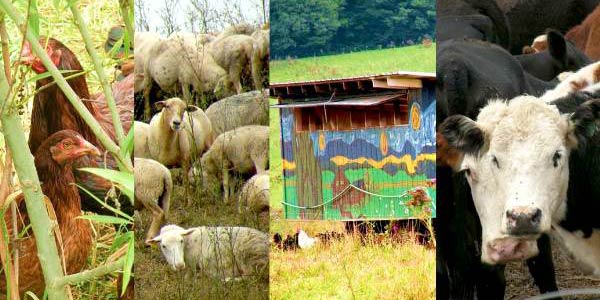There’s no substitute for buying organic meat directly from a local farm. It eliminates the guesswork. You can see how the animals are being raised. You can meet the person who’s raising them. And you can get direct answers to your questions. But a trip out to a farm isn’t always an option.
Grocery stores carry a wide range of organically-raised beef, poultry and pork. These premium-priced products are often packaged with a number of different labels like “grass fed,” “free-range” or “humanely raised.” In the absence of a clear understanding of the terms’ guidelines, it’s preferable to assume a bucolic setting where happy animals face just one bad day.
Unbeknownst to many consumers, organic standards focus primarily on what animals are ingesting, not on their welfare. In some instances, organically raised cattle, chicken and hogs are subjected to nearly the same “factory farm” living conditions as their conventionally raised counterparts. But that’s (hopefully) about to change.
With input from organic farmers and the National Organics Standards Board (NOSB), the USDA recently announced that it is seeking to strengthen animal welfare rules under the organic standard. The agency issued a proposed rule that aims to address health care, transport, slaughter and living conditions for organic livestock. As stated by the USDA’s Agricultural Marketing Service (AMS), the rule would:
- Clarify how producers and handlers must treat livestock and poultry to ensure their health and wellbeing.
- Clarify when and how certain physical alterations may be performed on organic livestock and poultry in order to minimize stress (some forms of physical alteration would be prohibited).
- Set maximum indoor and outdoor stocking density for avian species, which would vary depending on the type of production and stage of life.
- Define outdoor access to exclude the use of structures with solid roofing for outdoor access and require livestock and poultry to have contact with soil.
- Add new requirements for transporting livestock and poultry to sale or slaughter.
- Clarify the application of USDA Food Safety and Inspection Service (FSIS) requirements regarding the handling of livestock and poultry in connection with slaughter to certified organic livestock and poultry establishments, and provide for the enforcement of USDA organic regulations based on FSIS inspection findings.
A deeper dive into the lengthy proposed rule provides more specifics. Food Navigator’s Elizabeth Crawford has already done some of the legwork. In her post entitled “USDA wants to strengthen animal welfare rules under the organic standard,” she provides added detail.
At a time when animal welfare is a major concern among consumers, the proposed rule seeks to meet their expectations and safeguard confidence in the organic label. Predictably, producers are already expressing concerns over related costs. But with the retail market for organic products valued at $40 billion in the U.S., the voices of conscious eaters are likely to prevail.

